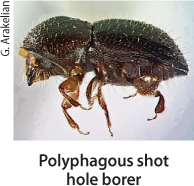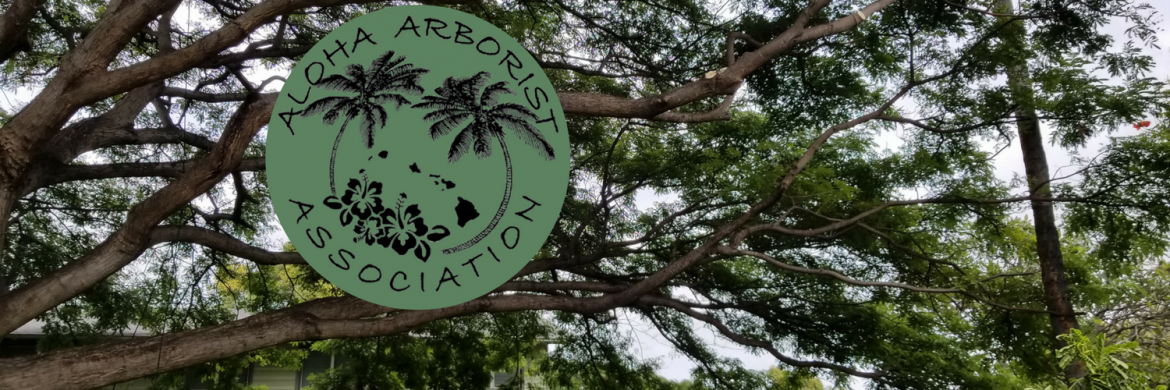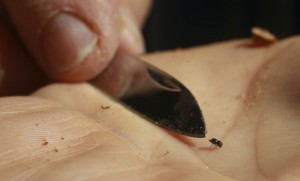 Polyphagous Shot Hole Borer – Euwallacea – and Fusarium Dieback (Fusarium sp.) beetle/ disease complex
Polyphagous Shot Hole Borer – Euwallacea – and Fusarium Dieback (Fusarium sp.) beetle/ disease complex
- Hosts: Most likely hosts in Hawaii are avocado and coral tree but it has attacked a wide range of trees in Southern California.
- Distribution: A new beetle species invading California (with potential for spread to Hawaii.) This beetle is being called the Polyphagous Shot Hole Borer and is genetically distinct from the very similar ambrosia beetle, Asian Tea Shot Hole Borer, Euwallacea fornicatus. This beetle species (PSHB) has been found in Israel and caused damage to commercial avocado orchards there.
- Damage: Disease is caused by a new, yet unnamed Fusarium fungus that forms a symbiotic relationship with the Euwallacea sp. beetle, which serves as the vector. PSHB attacks frequently cause bark staining and discoloration. Adult females construct branching galleries that can penetrate into the wood approximately 8 cm. The symbiotic fungi stain the galleries a brown to blackish color. Injury symptoms include small round adult entry/exit holes; fine white- to tan- colored boring dust; staining, gummosis, or sugaring on the bark exterior near entry holes; and crown and branch dieback. The ambrosia beetle can attack all size classes of hosts (ranging in size from 2−81 cm diameter at breast height.)
- Control: If trees are infected, systemic insecticides generally are poor for treating ambrosia beetles. Prophylactic spraying of the bark could be used to protect uninfected trees in some situations. Sterilize pruning tools between uses to avoid spreading the fungus. Chipping and solarizing/tarping infested wood can help to limit the spread of the beetle/fungus complex. Wood should be chipped to pieces smaller than 1″.
See information at:
- UC Center for Invasive Species Research: http://cisr.ucr.edu/polyphagous_shot_hole_borer.html
- USFS: https://gallery.mailchimp.com/f53528a5c9bea38c9fe83e8e9/files/stelprdb5441594.pdf
- UC DANR: http://ucanr.edu/sites/socaloakpests/Polyphagous_Shot_Hole_Borer/


